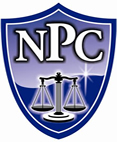Defendant’s Case-in-Chief; Motions Made After Defendant’s Case-in-Chief; Rebuttal and Surrebuttal
Terms:
Rebuttal Case:
Surrebuttal Case:The case that the plaintiff can put on after the defendant rests its case, in an attempt to impeach the evidence presented during the defendant's case-in-chief. The case that the defendant can put on after the plaintiff's rebuttal, in an attempt to impeach the evidence presented during the plaintiff's rebuttal. |
Defendant’s Case-In-Chief
The defendant’s case-in-chief operates in a similar fashion as does the plaintiff’s case-in-chief. The defendant will call witnesses to testify and present documentary evidence and other exhibits in support of its own position that it is not liable to the plaintiff.
The defendant may have one or more goals during its case-in-chief. First and foremost, the defendant usually wants to present evidence that contests the plaintiff’s evidence. The defendant may choose to present evidence that creates doubt in the jurors’ minds that the facts actually occurred as the plaintiff’s witnesses have testified. The defendant may choose to present evidence that completely counters the facts about which the plaintiff’s witnesses have testified.
Another goal the defendant may have is to present evidence that will prove its affirmative defenses. See Saks v. Franklin Covey Co., 316 F.3d 337, 350 (2d Cir. 2003) (“An affirmative defense is defined as ‘[a] defendant's assertion raising new facts and arguments that, if true, will defeat the plaintiff's or prosecution's claim, even if all allegations in the complaint are true.’ ”).
For example, if the defendant has pleaded the affirmative defense that the statute of limitations has run on a particular claim, the defendant may present evidence concerning when the events leading to the cause of action actually occurred. If the defendant offered as, an affirmative defense, the argument that the defendant could not have breached the contract in question because he was 17 years old at the time that he entered into the contract, and, therefore, was an infant unable to contract, the defendant would present evidence to prove that at the time he entered into the contract, he was actually 17 years old.
If the defendant has brought any counter-claims against the plaintiff, it is during his case-in-chief that he will present evidence to support those counter-claims, just as the plaintiff offered evidence to support her claim during her case-in-chief. The defendant’s case-in-chief is also the time that the defendant would present evidence to support any cross-claims orthird-party claims he has against other parties to the action.
After the defendant has examined one of his witnesses, the plaintiff has the right to cross-examine the same witness. After the plaintiff’s cross-examination, the defendant has the right to conduct a redirect examination, following which the plaintiff, in most jurisdictions, has the right to re-cross examine the defendant’s witness.
If the defendant has examined a witness that supports the defendant’s cross-claim or third-party claim, after the defendant’s direct examination, the party against whom the testimony and/or physical evidence is being offered has the right to cross-examine the witness. There are differing rules in different jurisdictions as to whether the plaintiff also has the right to cross-examine the witness in this situation (when the witness is against the third party, not against the plaintiff). Once the other party has cross-examined the witness, the defendant may conduct redirect examination, followed by the other party’s re-cross examination.
Once the defendant is satisfied that he has examined all witnesses and has presented all evidence necessary for its defense, counter-claims, cross-claims or third party actions, the defense will rest its case.
At this point, the jury will again leave the courtroom, and, in most instances, the parties will present various motions to the court.
Motions Made After Defendant’s Case-In-Chief
The plaintiff may move for a directed verdict (or judgment as a matter of law) on the plaintiff's claim or on any of the defendant’s affirmative defenses. Using the example above, assume that the defendant pleads an affirmative defense that at the time the defendant entered into the contract, he was 17 years old, and thus unable to legally enter into a binding contract. The plaintiff might move for judgment as a matter of law on the ground that the defendant did not offer sufficient evidence to support the affirmative defense. The plaintiff might also move for judgment as a matter of law on the ground that in the jurisdiction, the minimum age to enter into a legally binding contract is 17 years old, and, therefore, the defendant’s affirmative defense is irrelevant in light of the evidence presented. Again, the evidence must be viewed in the light most favorable to the non-moving party.
The plaintiff is also entitled to move for judgment as a matter of law regarding the defendant’s counterclaim, just like the defendant was entitled to move for judgment as a matter of law regarding the plaintiff’s original claim. (In a counterclaim, the defendant essentially becomes the plaintiff, having the burden to prove the claim, and the plaintiff must defend the counterclaim in the same way the defendant must defend against the original claim.)
Rebuttal and Surrebuttal
If no motion is successful in terminating the trial, the trial will continue with the plaintiff’srebuttal and the defendant’s surrebuttal. The purpose of the plaintiff’s rebuttal, as its name would imply, is to rebut the defendant’s case-in-chief. It is conducted in the same way as the cases-in-chief, as witnesses will testify and further exhibits may be entered. The purpose of the defendant’s surrebuttal is to rebut the plaintiff’s rebuttal, and is conducted in similar fashion.
See Munoz v. St. Mary-Corwin Hosp., 221 F.3d 1160 (10th Cir. 2000). |
©2003 - 2013 National Paralegal College


